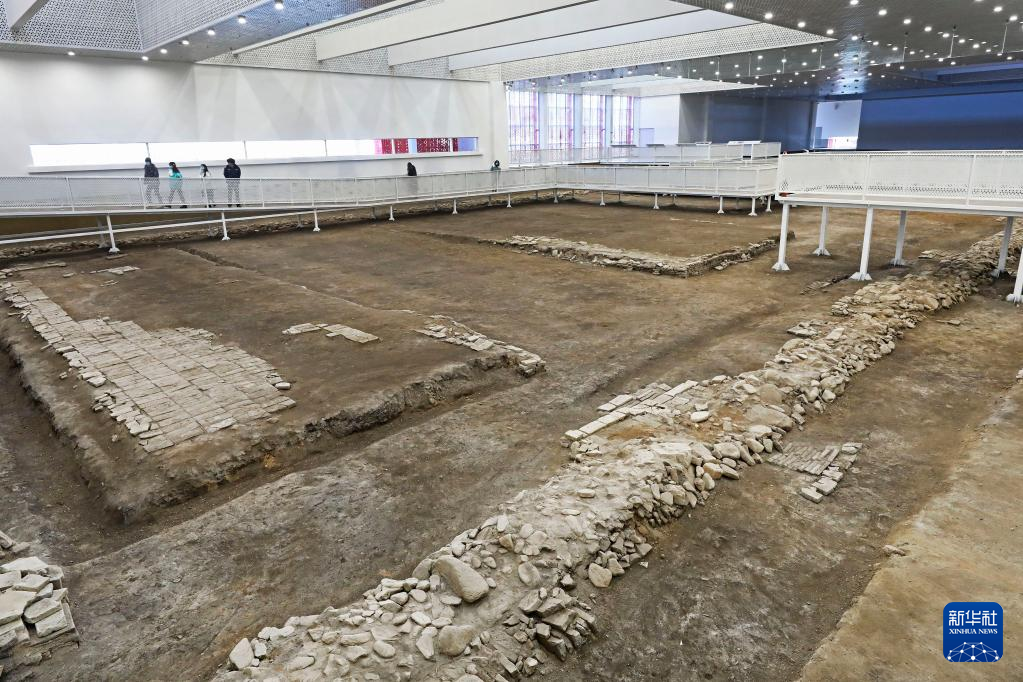Royal clues unearthed in excavation
 0 Comment(s)
0 Comment(s) Print
Print E-mail China Daily, January 11, 2022
E-mail China Daily, January 11, 2022

"The porcelain serves as an important reference for us to identify the types of porcelain used by the Jin imperial family. And we found they used white ceramics from Ding Kiln and celadons, which are similar to those of the Ru Kiln celadons found at the Qingliang Temple in Henan province," says Huang.
A chiwen, or imperial roof decoration, on exhibition is in the shape of a dragon with glaring eyes and an open mouth. Its size is in accordance with the record of Yingzao Fashi, a technical treatise on architecture written by ancient Chinese architect Li Jie in the Song Dynasty (960-1279).
"We had already known that the official architecture of the Jin era inherited many features of the Song period, but what are the features? The Taizicheng site gives us some answers. Its architectural layout allows us to gain new knowledge on the imperial architecture of the Jin era," says Huang.
The nabo custom originated in the Liao Dynasty, referring to the emperor's temporary residence in the Khitan language. It points to the tradition that the imperial family kept their ancestors' nomadic habit of moving around according to the seasonal climate. This tradition was inherited by later dynasties that were established by nomadic groups, like the Jin and Yuan periods, and even extended to the Qing Dynasty (1644-1911), which had some similar customs.
During the nabo period, there were hunting exercises, ritual activities and other entertainment. Emperors met with local officials and dealt with political and military affairs.
"Nabo had strategic importance for the political, economic and military aspects of the country at that time. Many major policies and decisions were actually formed during the process," says Huang.
Some jade decorations on exhibition show people's activities, like hunting geese and deer, and taming gyrfalcon, an important totem of nomadic hunting.
The nomadic groups in northern China have a long history taming falcons, especially gyrfalcons. Many cultural relics and murals in tombs show patterns of this animal, usually with its wings spread and sharp claws aimed toward the ground.
Archaeological studies show the Taizicheng site is a rectangular area of 14.3 hectares, with 72 building foundations, 22 roads and four drains found. Buildings at the site are distributed along a central axis, and show the layout of working areas in the front and living areas in the rear, which is a tradition for imperial palaces.
Excavation of the site was rated as one of the top 10 archaeological discoveries in 2018. A Taizicheng archaeological site park will be opened in the future.
According to Guo Xinyao, vice-mayor of Zhangjiakou, "we will build the park in a new way which combines cultural relic protection and the Winter Olympics, and thus add cultural elements to the upcoming Games".






Go to Forum >>0 Comment(s)